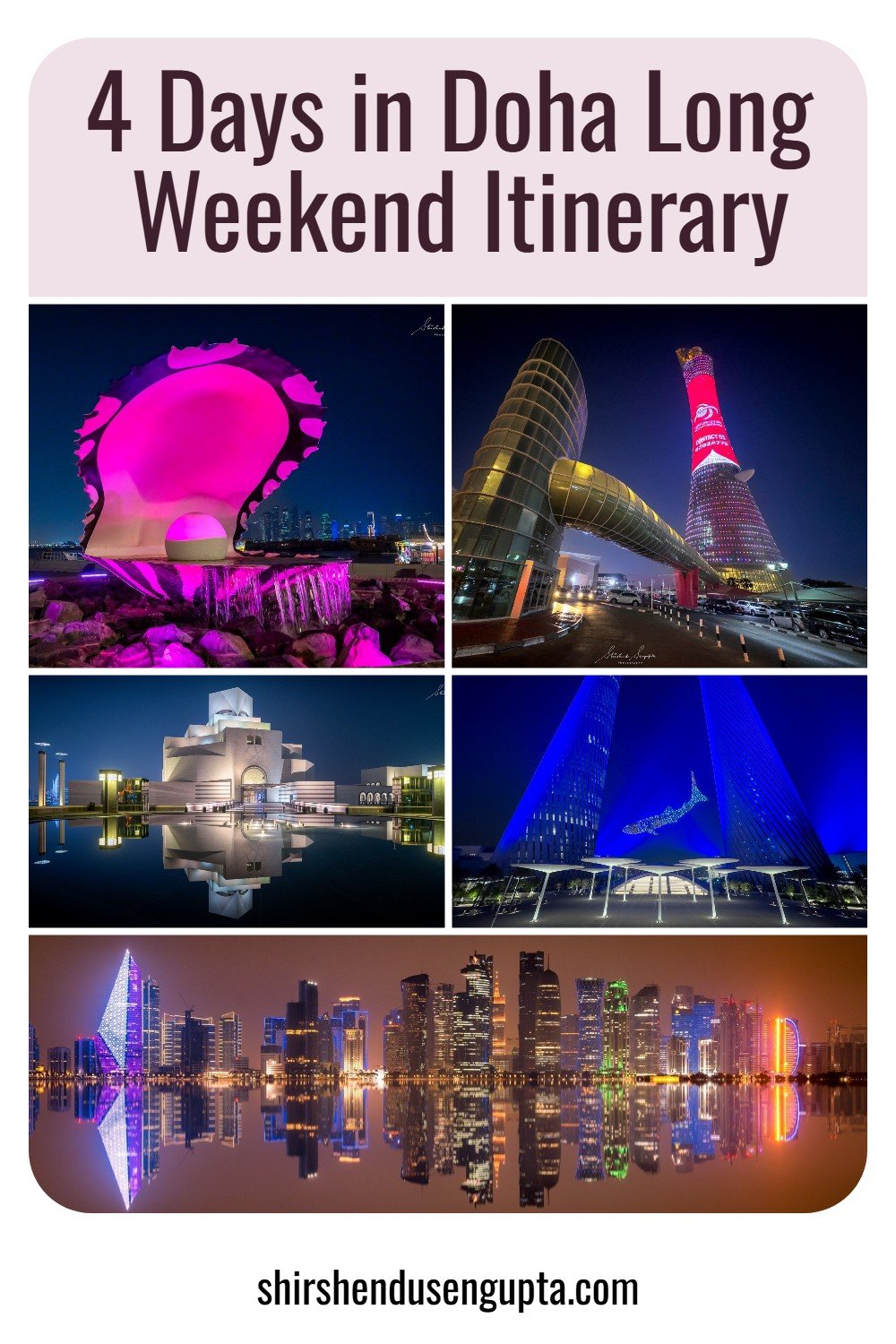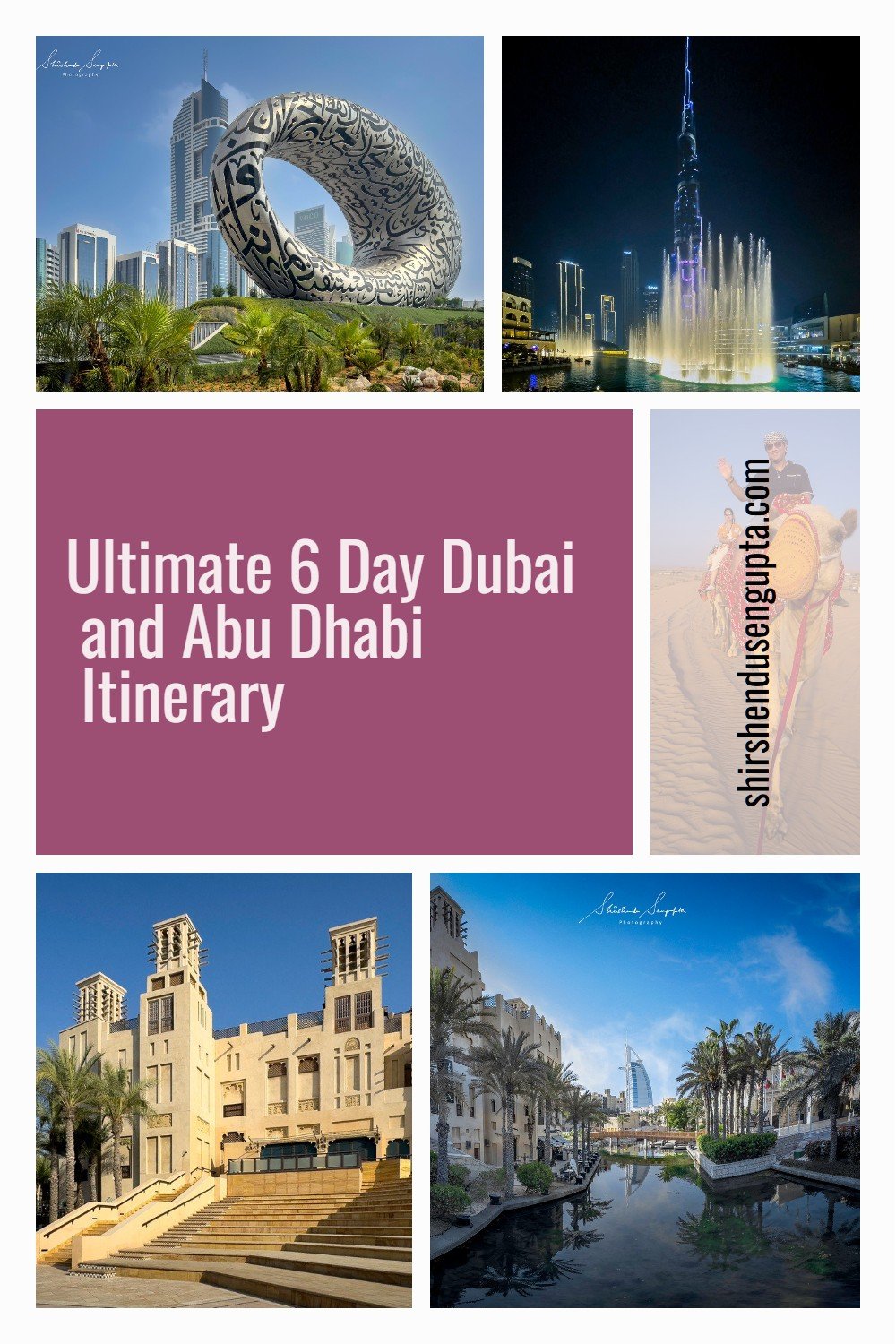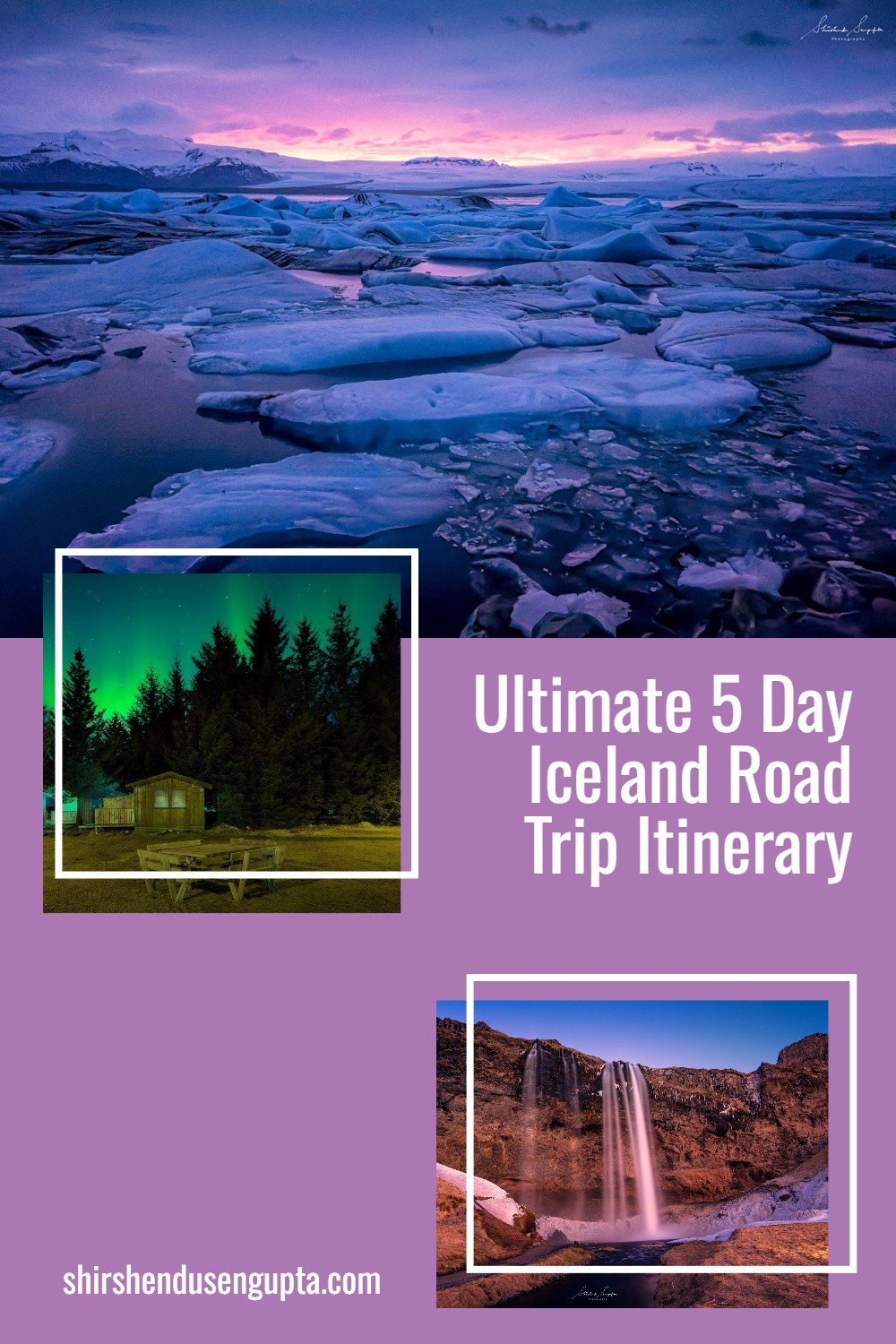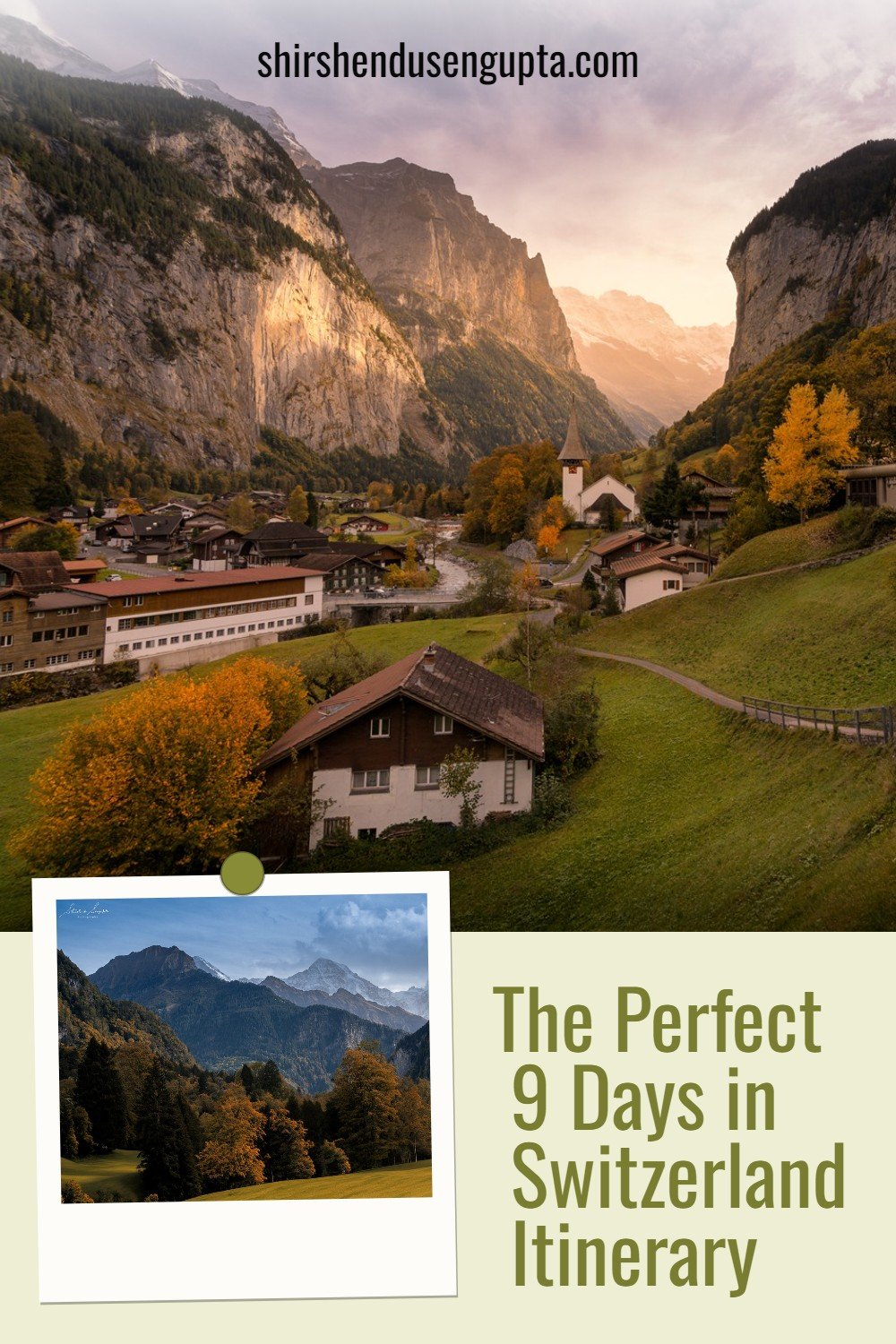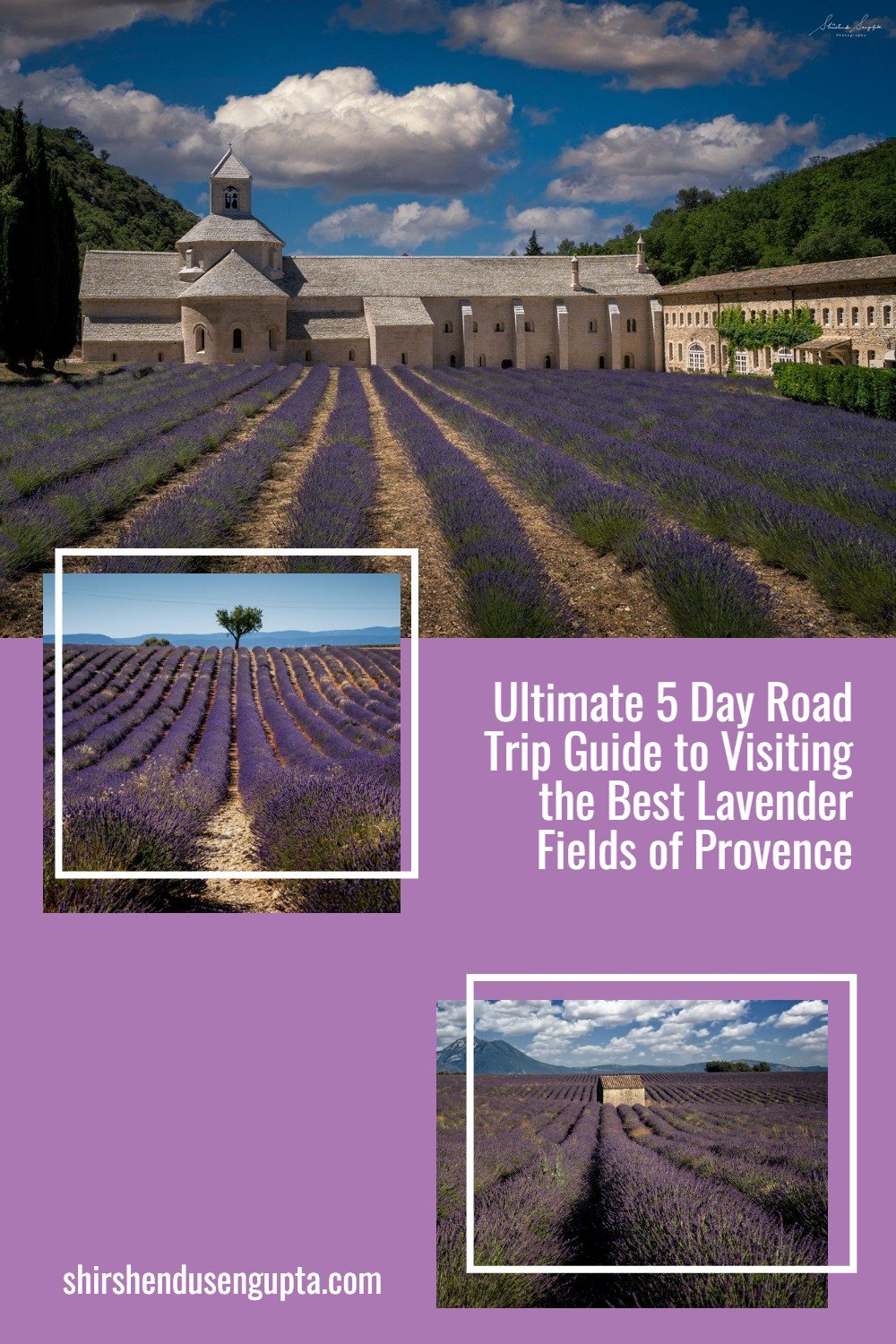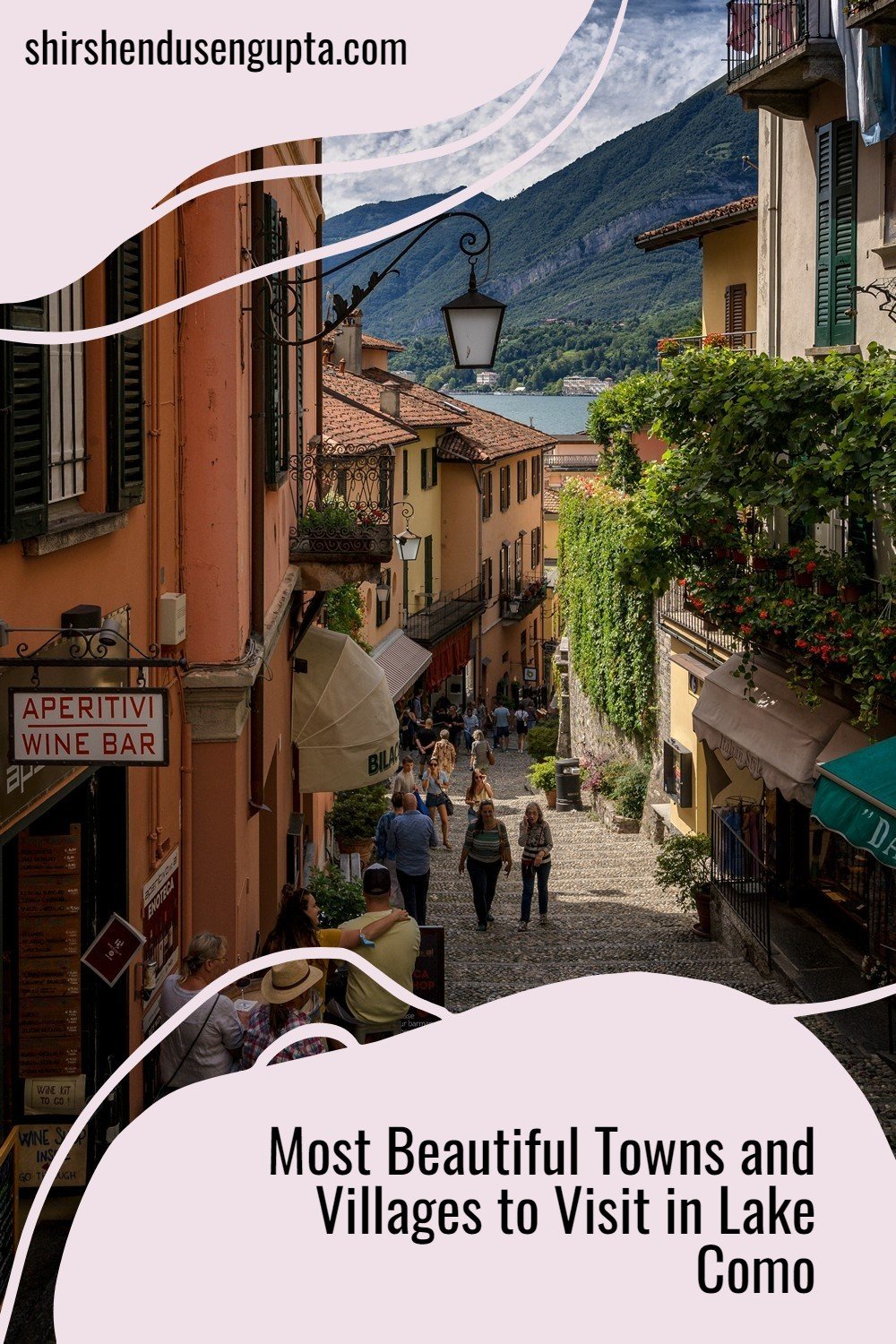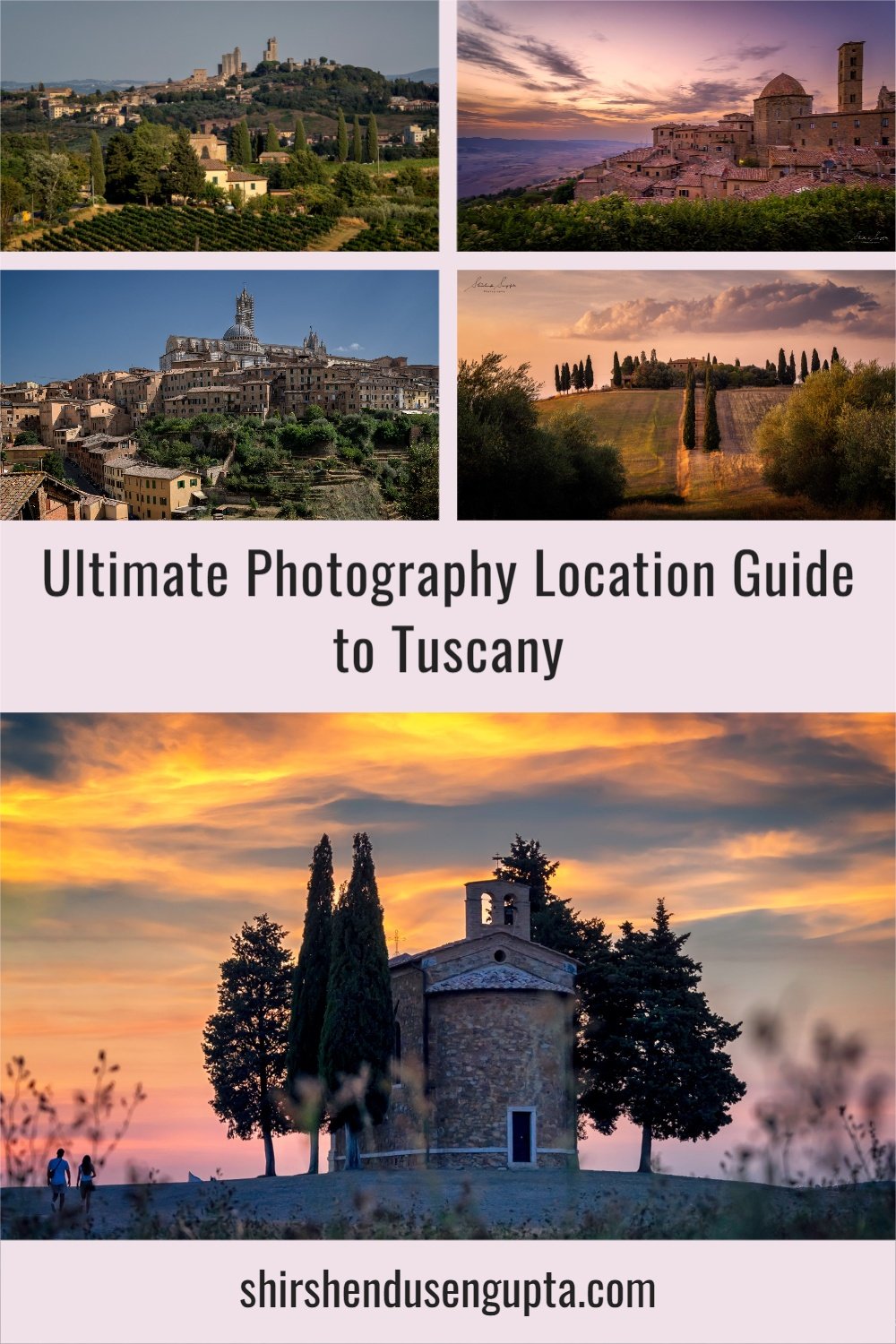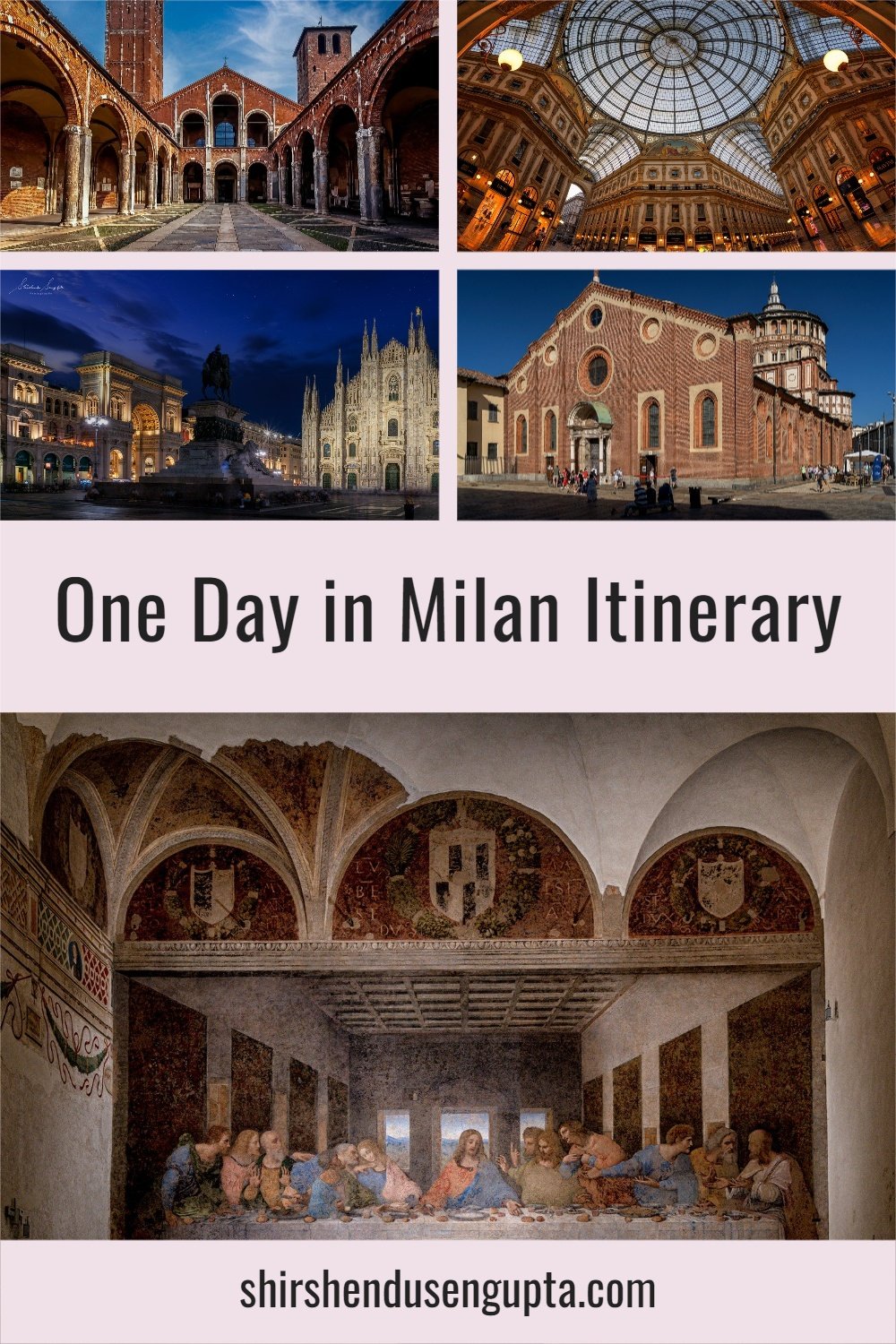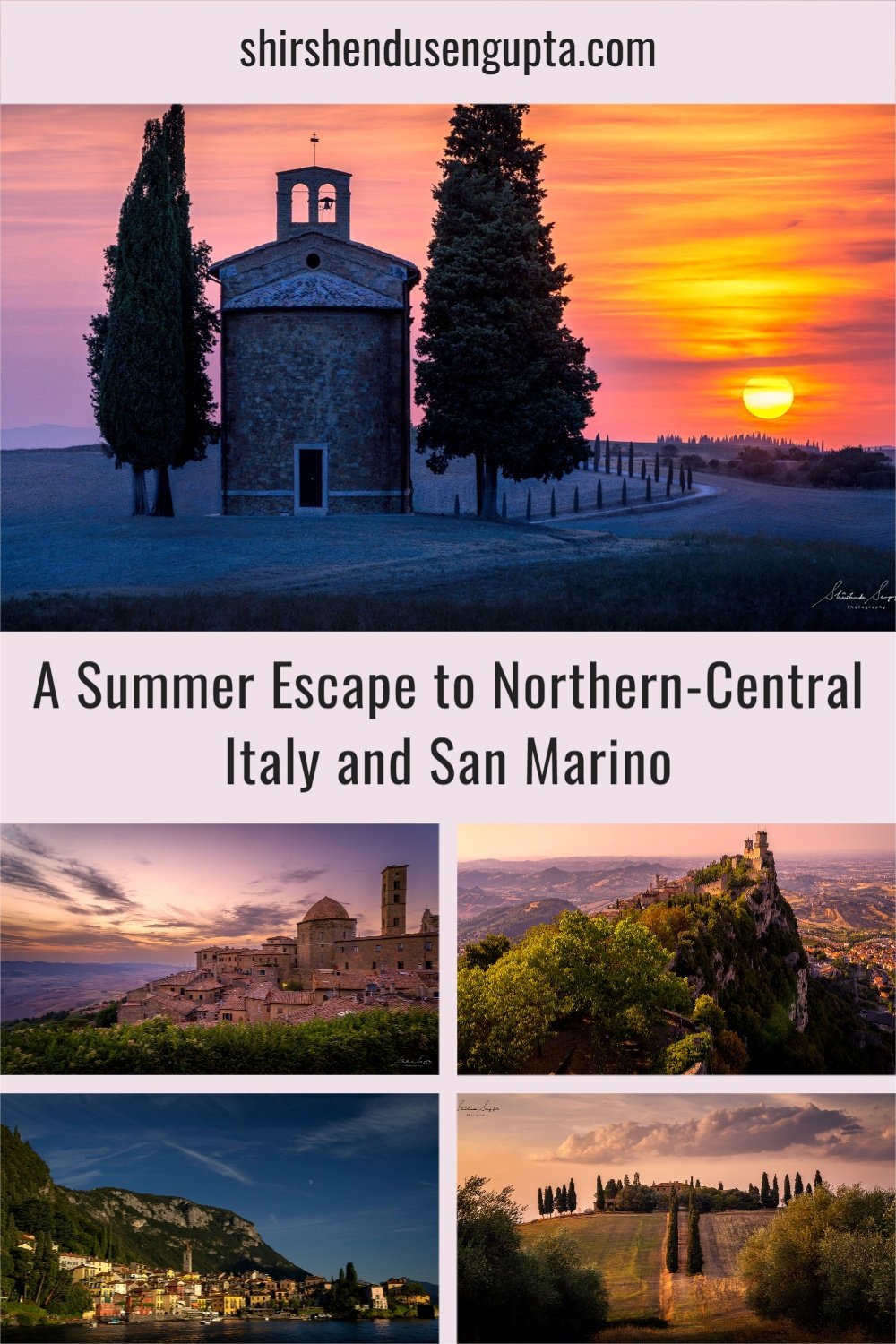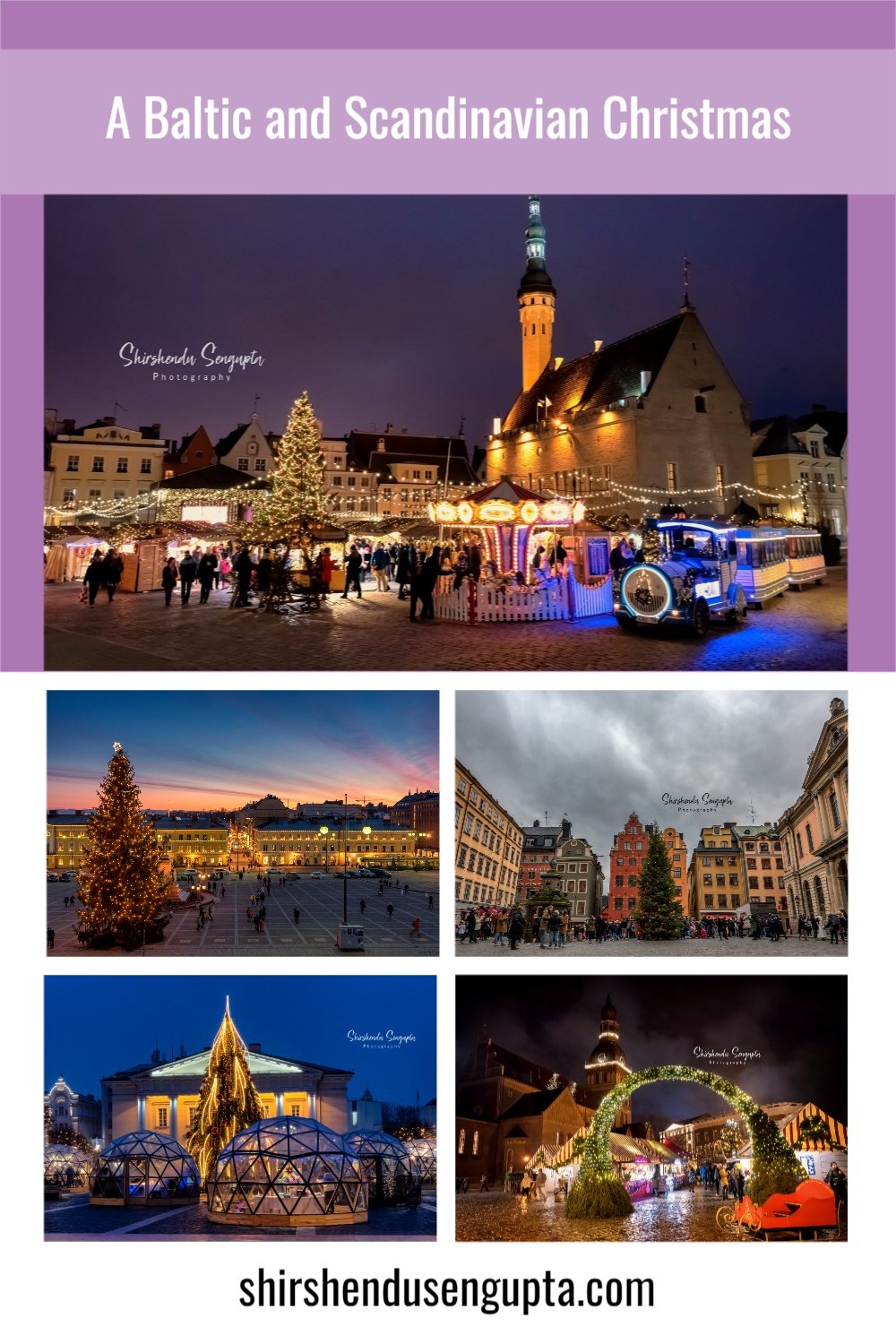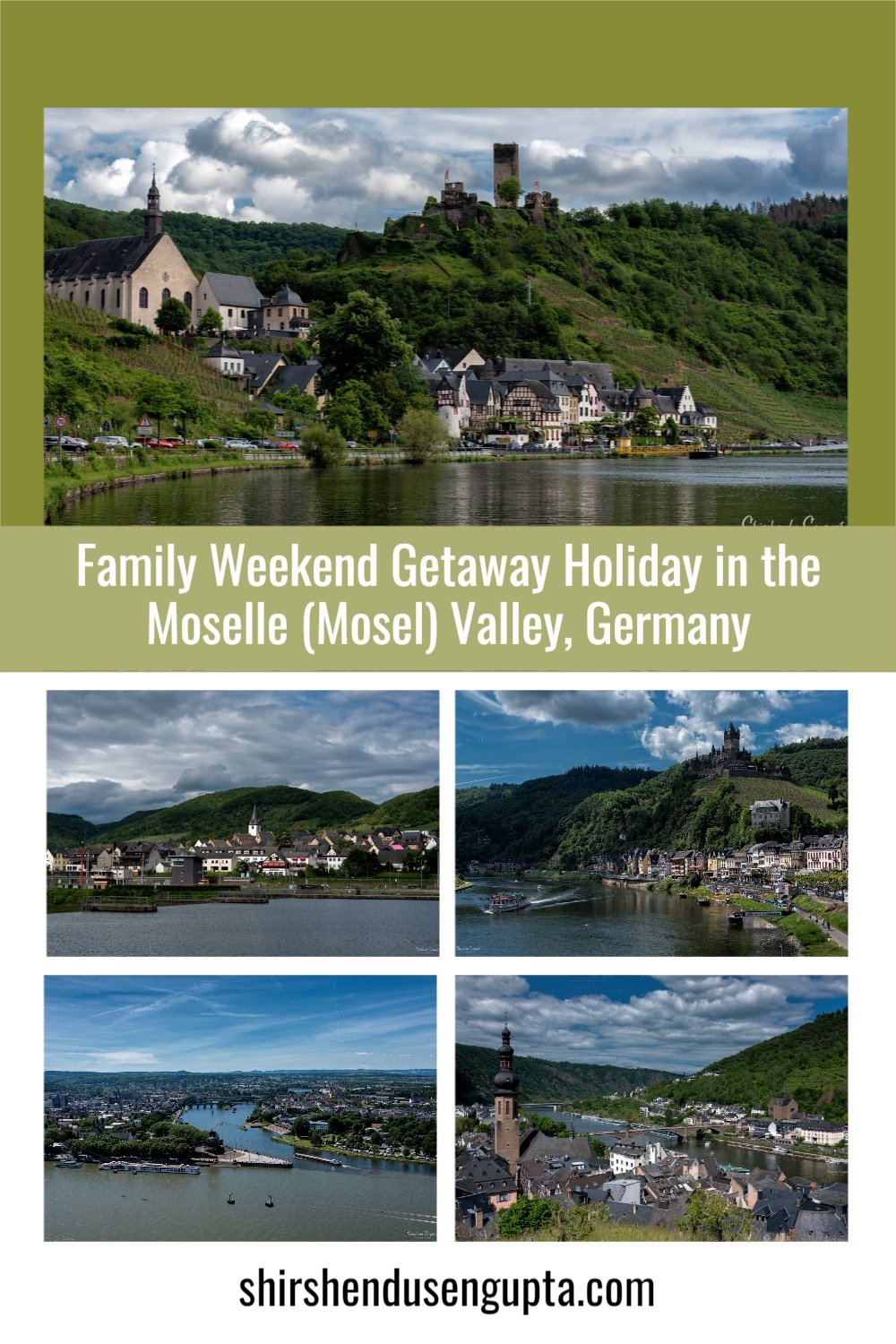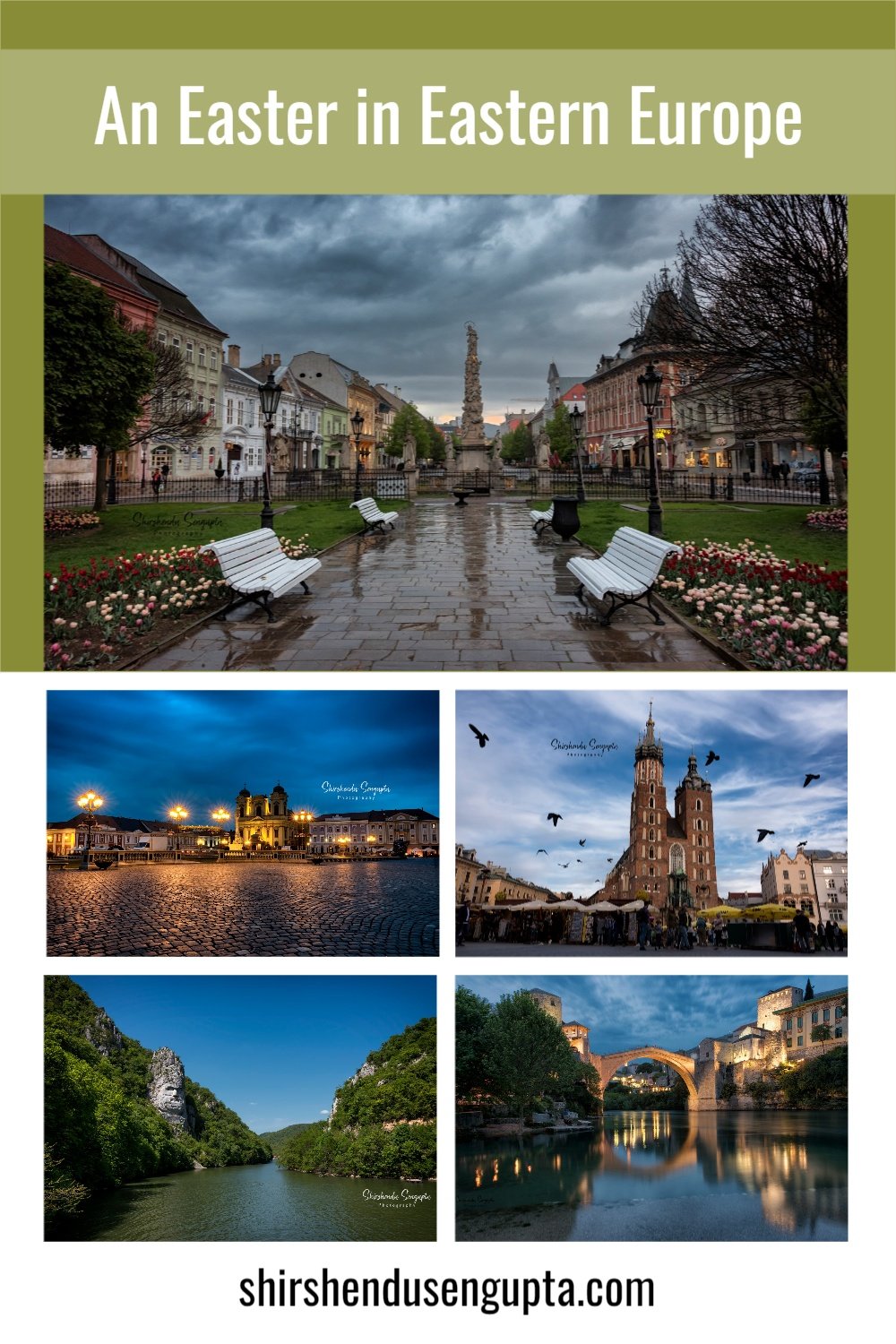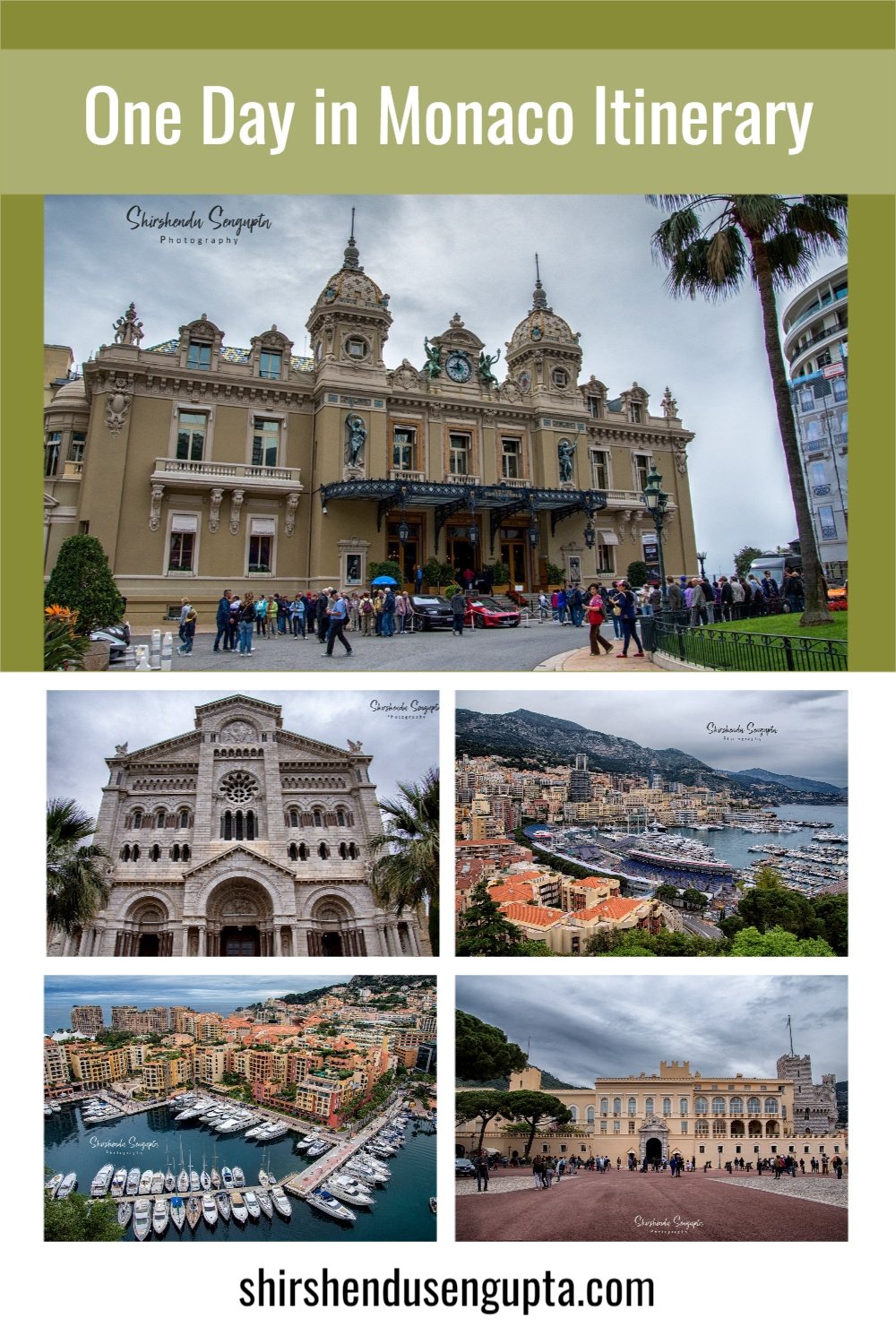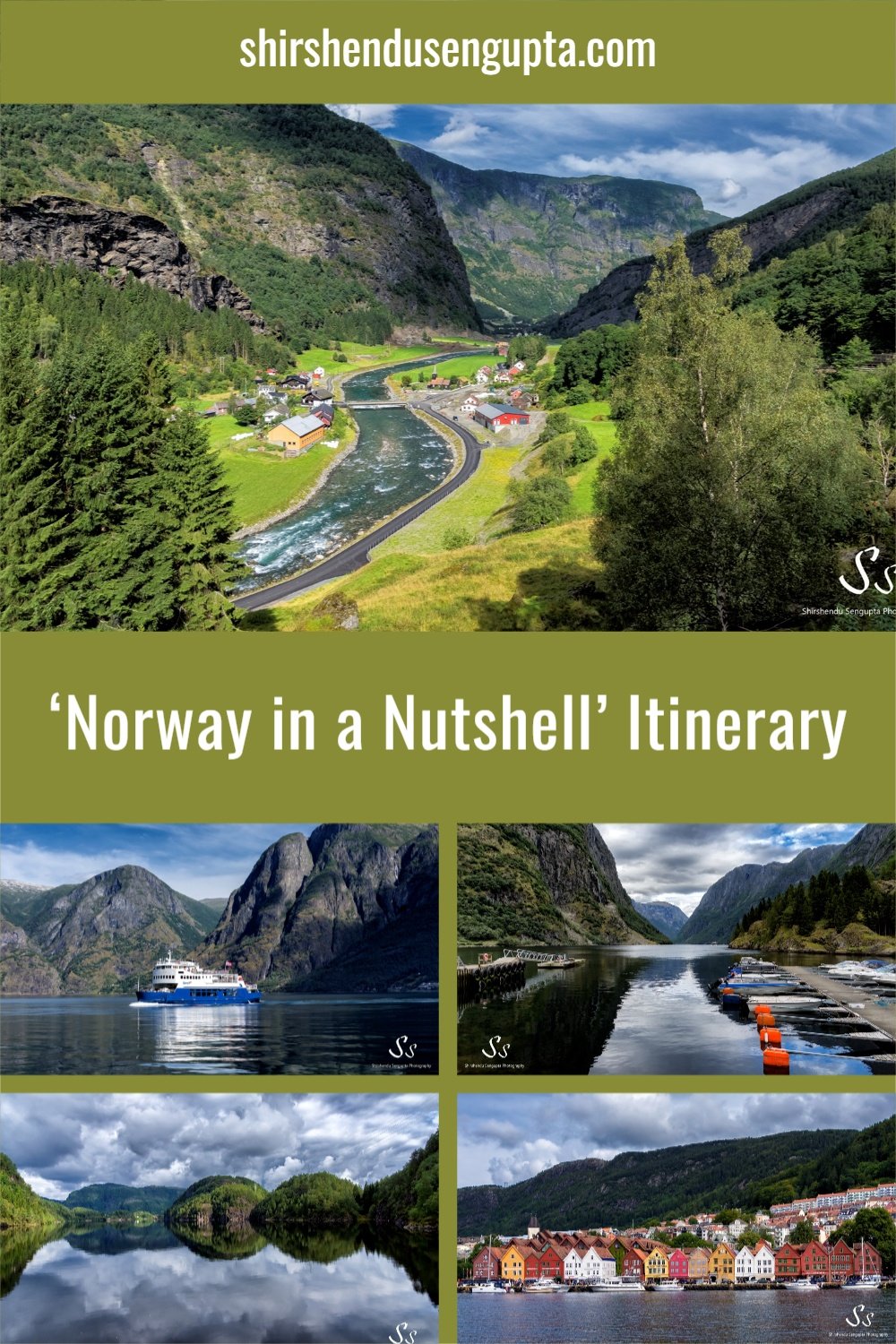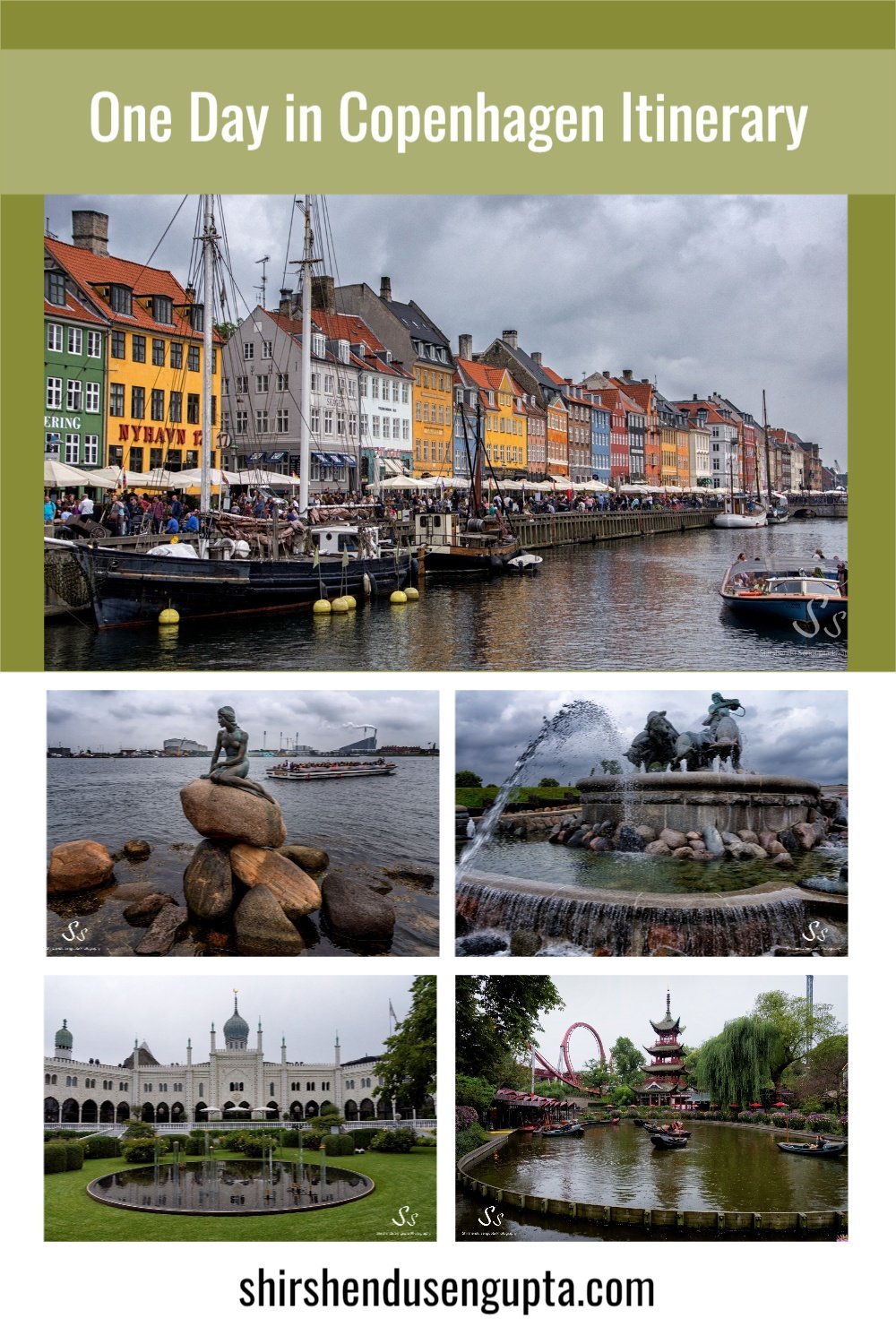4 Days in Doha Long Weekend Itinerary | 26 Best Things to Do and Places to Visit in Doha | 26 Must See Tourist Attractions in Doha, Qatar
Prologue
Me, my wife Jayeeta, and my son Ricky are Indians by birth and Dutch citizens by naturalization, living in the Netherlands. While Ricky is going through his academic years, we’re pursuing our careers in management and our passion for photography and travel, in a land far from our motherland (or shall I call it home away from home?). Our parents live in our native city of Kolkata (in the eastern part of India), and we visit them during Ricky’s summer holidays every year to spend quality time together. Because we have no direct flights to the eastern part of India from the Netherlands, we need to break our journey in an intermediate country and change flights to Kolkata. And when we do that, we try to stop over in that country for a few days and explore it, before leaving for Kolkata. The same goes for the way back to the Netherlands.
During one such summer holiday, we visited Doha in Qatar for 3 days on our way back to the Netherlands from Kolkata. So, based on our personal experience, today I’m going to share with you an ultimate itinerary to make the most of this amazing city over a period of 3 days. Let the journey begin!
Welcome to Qatar!
Located on the northeastern coast of the Arabian Peninsula in the Middle East, Qatar is a country that shares its only land border with Saudi Arabia to the south as the Persian Gulf encloses the remainder of its territory. Qatar and neighboring Bahrain are divided by the Gulf of Bahrain, an inlet of the Persian Gulf. Since Mohammed bin Thani signed "an agreement, not a formal treaty" with Britain in 1868 acknowledging Qatar's independence, the House of Thani has governed the country as a hereditary monarchy. After being ruled by the Ottomans, Qatar was made a protectorate of the British in 1916 and became an independent nation in 1971, when Doha was designated as its capital. Tamim bin Hamad Al Thani is the current emir of Qatar who has almost total dictatorial control over the executive, legislative, and judicial branches of government according to the Qatari Constitution including selecting the Prime Minister and the cabinet.
Doha - The Pearl of the Middle East
The multicultural Qatari capital Doha is dubbed as the Pearl of the Middle East. The majority of the nation's population resides here, along with expatriate communities from various ethnicities. It started as a tribal port community in a desert and its economy was based on pearl digging, fishing, and sea trading. However, due to this little nation's enormous oil wealth and ambition to become the dominant force in the Middle East, Doha has experienced an epic transformation since 2004. Large stretches of undeveloped land that originally blanketed the city's landscape have been replaced by grandiose malls, opulent hotels, and outrageous high-rises; traditional marketplaces have been refurbished to reveal contemporary twists. Additionally, a large number of hotels and restaurants sprung in 2022 as part of the FIFA World Cup preparations.
Despite all these developments, the old and the new coexist comfortably in Doha. Being a city steeped in culture, tradition, and heritage, it is home to some of the most striking museums, galleries, and public art projects in the region. Traditional dhows (wooden cargo boats) bob on the water, palace guards still ride camels to patrol the streets, and in the city's century-old souk, traditional fabrics, fragrances, and even falcons are on sale. That my friends, is Doha for you!
Our 4-Day Doha Itinerary
Day 1: Flying to Doha (Qatar) from Kolkata (India) via Delhi (India) after a Mad Max Ordeal
We had the plan of a casual stopover in Doha on our way back to the Netherlands after spending about a month with our parents in Kolkata during Ricky’s summer holiday. However, it didn’t start off as smoothly as we had expected. Let me take a step back to get you up to speed. When we had booked tickets from Kolkata to Doha, we did not get the direct flight from Qatar Airways as it was full. So, we had booked 2 Air India flights – one from Kolkata to Delhi in the afternoon and another from Delhi to Doha in the evening with a layover of 2 hours in Delhi which should’ve been sufficient to go through the security checks and immigration. However, 2 days before the flight I got an SMS from Air India saying that the first flight from Kolkata to Delhi was delayed by an hour thereby making it impossible for us to catch the connecting flight to Doha. So, I called up Air India and they agreed to shift us to a morning flight from Kolkata to Delhi free of cost (though I had to pay for getting 3 seats next to each other since 3 adjacent seats were unavailable in the morning flight in the free seat category). This meant a 7-hour layover at Delhi but at least it was ensured that we would be able to catch the Delhi to Doha flight.
When we reached the Kolkata airport 3 hours prior to departure, despite having confirmed paid seats, checked in online, and luggage weights within the allowed limit, the guy at the counter took 50 minutes to check in our luggage (there was only 1 baggage check-in counter for international flights open in Kolkata airport and we were the first in the queue). He was reading our passports line by line like a Dan Brown novel and matching them with online check-in information (honestly have no clue what he was doing for 50 minutes). Then he started googling if with a Dutch passport we could board an aircraft for Doha from Delhi (he had no clue that Dutch citizens had visa-free or visa-on-arrival access to 193 countries and territories). Anyway, after the baggage check-in, the security check took another 1 hour to the extent that we had to be rushed by ground staff to the plane just before boarding closure. But the ordeal didn’t end there.
After we boarded the flight, we were made to sit in the flight for 1 hour in the name of a technical snag and then finally told to deboard the flight as apparently the engine was not starting. It was flabbergasting for me that they made passengers board the aircraft and then tried starting the engine just before departure only to find it wasn’t working! We were not there to watch a football match on TV that they would switch it on just 1 minute before the national anthems started playing. I failed to comprehend how could they take such serious business so casually.
Anyway, after deboarding the aircraft we were told to meet the ground staff at a certain counter where it was total chaos as you could imagine. Not everyone was lucky to have a 7-hour layover like us between this and their connecting flights and many people including senior citizens were set to miss their connecting flights from Delhi to Zurich, London, Melbourne, and many other places. So, after half an hour of blasting the staff, they made some phone calls and suddenly said that the same flight was going to depart again and that all passengers must go through a security check all over again and re-board the aircraft. When we asked how come the engine problem got solved within half an hour of deboarding the plane which could not be resolved in the 1 hour we were made to sit in the plane, they said that at that point in time they weren’t sure if the spare parts needed to fix the problem were available but later they got the spare parts and fixed it. I still believe they fixed nothing, and the engine started automatically after some trial and error and they decided to fly us in the same aircraft to avoid the hassle of rescheduling the flights of so many passengers. So, we took a giant leap of faith into the deep blue sky in the same aircraft and reached Delhi safe and sound by the Grace of God, caught the connecting flight from Delhi with a much lesser layover than 7 hours (but much less hassles than that at the Kolkata airport) and finally arrived at Doha.
Upon reaching Doha Hamad International Airport Terminal 3, we picked up our pre-booked family SUV Nissan X-Trail from ‘Al Muftah Car Rental,’ Winner of Car Rental of the Year & Best Local brand Car Rental Company (No.1 in Qatar for the last 5 decades) and drove to our deluxe suite in Golden Tulip Doha. After checking into our room, we went down to the ground floor of the hotel to have dinner at the Sarhad Premium Restaurant.
The temperature was 44 degrees Celsius (feels like temperature was 52 degrees Celsius), with 90% humidity. Therefore, the plan for the next day was to stay back in the hotel until late afternoon working out in the gym or relaxing in the rooftop swimming pool, and start the exploration in the evening when the heat would get less and the city would come to life with the lights switched on everywhere. With that plan in mind, we hit the bed dog tired, and fell asleep at the drop of a hat!
Day 2: Exploring Katara Cultural Village, the Pearl Monument, the Torch Tower, and Villaggio Mall
Breakfast, Gym, and Swimming Pool at the Hotel
After the hectic plane fiasco the day before, we woke up a little late yesterday, went for the buffet breakfast at our hotel Golden Tulip Doha, followed by staying soaked in the swimming pool from 10 AM to 2 PM amidst 44 degrees Celsius. Since Qatar is quite conservative, in swimming pools you normally have separate timings for men, women, and families. We went during the family hours and for the 4 hours we were in the swimming pool, we had the entire pool to ourselves making it feel more like a private pool. One of the reasons could be that many schools have opened and hence there weren’t many guests in the hotel anymore. Anyway, after the dip, we had lunch in the Sarhad Premium restaurant on the ground floor of the hotel and started our Doha exploration in the late afternoon.
Pigeon Towers (Katara Cultural Village)
We started our Doha exploration by driving 20 minutes northwards from our hotel to the Katara Cultural Village. Upon reaching we parked at the Katara Plaza Basement Parking (GPS Coordinates: 25.3610, 51.5231). Situated where the Middle East meets Asia, Qatar has long been a cultural melting pot. Katara Cultural Village was built to celebrate that cultural exchange and to convey messages of peace, understanding, and optimism among the varied people of the world.
If you have all the time in the world, you can spend an entire week here embarking on a cultural odyssey. You can watch the performance of the Qatar Philharmonic Orchestra in the Opera House, attend a concert at the Qatar Music Academy, enjoy seasonal events at the Greek-style Katara Amphitheatre, view a 2-D or 3-D show on astronomy at the Al Thuraya Planetarium, witness intriguing works in visual arts ranging from ceramics to photography to computer design at the Visual Art Center, see the stamps from 22 Arab countries in the Arab Postal Stamp Museum, visit two ornate masjids or mosques, take a stroll at the Gardens of Katara, grab a bite at one of more than a dozen restaurants in the village with diverse cuisine, or hit the 1.5 km purpose-built Katara beach for some watersports. Don’t worry, there are golf carts (arranged by Qatar Museums) driving all around the complex that can transport you for free from one part of the complex to another (you have the same service in most other Museum campuses in Qatar like the Museum of Islamic (MIA) that’s coming later in the article. However, if you have limited time, read on to know the highlights of the Katara Cultural Village that we visited, and recommend you to visit as well.
The first and most iconic highlight is the Pigeon Towers. Pigeon towers are found all across the Middle East. They were introduced by Indian and Persian immigrants who brought the pigeon-raising custom with them. Pigeon raising was a means to collect fertilizers for crops in Qatar and the surrounding nations. Furthermore, the pigeons themselves were occasionally used for meat, and their feathers were used to make pillows. The massive cylindrical towers were constructed out of wood, mud, lime plaster, and gypsum. While the pigeons were naturally drawn towards them as they resembled the rocky ledges and nooks where pigeons prefer to nest, mate, and raise their young in the wild, they also served as impenetrable fortresses to protect the pigeons from predators like hawks, owls, and crows who couldn’t enter the towers due to the small size of the windows. Old castles and forts frequently had pigeon towers. They served as a status symbol. Today, many of these towers are either in ruins or in poor condition since the need for fertilizer and pigeon meat has declined. At the Katara Cultural Village, three such Pigeon Towers have been conserved as cultural landmarks.
Katara Mosque (Katara Cultural Village)
Designed by Turkish architect Zeynep Fadıllıoğlu, the first female architect to specialize in mosques, the Katara mosque features Persian and Turkish mosaic tile, enamel, inscription, and 24-karat gold calligraphic panels offering a stark contrast to the adjacent Pigeon Towers. The minaret, dome, and prayer niche (mihrab) are inspired by architectural styles from Turkey, Turkmenistan, Syria, and northern Persia. Inside the mosque, religious events and lectures are held often.
Katara Amphitheater (Katara Cultural Village)
Considered to be the Gem of the village, the classical 3,275 sq. meter (35, 252 sq. feet) Greek-style Katara Amphitheater reflects Islamic influences, especially in its arched entrances. Accommodating up to 5000 spectators, it offers stunning views of Katara Beach on one side and a cultural village on the other and hosts some amazing world-class events like open-air film viewing and concerts inviting famous guests which include actors, opera singers, and more from across the world.
Force of Nature II by Lorenzo Quinn (Katara Cultural Village)
Between the Katara Amphitheater and the Katara Beach stands a bronze art installation called ‘The Force of Nature II’ by Italian artist Lorenzo Quinn. ‘The Force of Nature II’ across many parts of the globe like New York, London, and Shanghai, which depicts Mother Nature delicately hurling earth in its orbit with a piece of fabric and with a little disturbance from humanity the planet can fall off from its position. About the art, Lorenzo says on his website “We think of ourselves as the supreme force that is positioned above all living beings in absolute control of our destiny. We live with the false sense of security only awakened when the fury of Mother Nature occurs to remind us of her presence and our responsibility for her child (Earth)."
Gandhi’s 3 Monkeys by Subodh Gupta (Katara Cultural Village)
‘Gandhi’s 3 Monkeys’ by Indian artist Subodh Gupta is among the most intriguing of Doha's well-known eye-catching art pieces. The Japanese used 3 monkeys namely Mizaru, Kikazaru, and Iwazaru to symbolize the old proverb, "Hear no evil, see no evil, speak no evil". Mahatma Gandhi, the Indian social activist who led a non-violent freedom movement against the British, got the statue of the three monkeys from a Japanese monk and cherished them all his life.
Gupta decided to provocatively depict the idea by making sculptures of human heads rather than monkeys with their mouths, ears, or eyes covered. One picture shows a terrorist with his eyes uncovered while his face and ears are covered by a balaclava. Another shows a soldier with a helmet over his head and ears, black glasses over his eyes, and a stern expression on his face with his mouth open. The third head's ears are visible through a gas mask that covers his mouth, nose, and eyes. To make the texturized portions of the sculptures, the hood, helmet, and gas mask, Gupta collected plates, spoons, bowls, cups, and other cookware. Gupta regularly creates artworks that symbolize contrasts, usually between riches and poverty, using found objects and household goods. With the household objects providing a very domestic aspect in otherwise horrific images, his intriguing depiction of the monkeys' proverb produces a stark contrast between violence and tranquility. In the last image below, you can also see the Guinness-declared “largest key in the world,” behind the terrorist face.
Katara Beach (Katara Cultural Village)
Stretching over 1.5 km, the Katara Beach situated in Katara Cultural Village is unquestionably one of Qatar's best-preserved beaches. In addition to enjoying a leisurely day in the sun, you can engage in water sports, including parasailing, jet skiing, water skiing, diving, speed boating, kayaking, surfing, and knee boarding. This private beach features a number of restaurants that serve a wide range of delicious food and a charming view of the Doha skyline. This location will provide the perfect refreshing atmosphere if you're looking for peace away from the bustle of the city. Additionally, Katara has lowered the cost of adventure sports significantly, making it an affordable day trip destination.
Golden Mosque (Katara Cultural Village)
Despite being smaller, Katara's second mosque is just as striking. Facing the amphitheater, this magnificent mosque in Ottoman architecture glistens in the sunlight, covered with thousands of golden tiles. Though tourists are not allowed inside as it is purely a place for worship, it is one of the most beautiful mosque designs in the city and is worth a closer look from the outside if you're visiting the Katara Cultural Village.
Children’s Mall (Katara Cultural Village)
The Children's Mall is a one-of-a-kind shopping experience designed to meet all of the needs of kids, including clothing, entertainment, and education. The gift box-shaped mall's entertaining design will make the idea of "educatement" a reality by combining entertaining and instructive games, with a focus on interactive features. You can drop your kids off at the mall for a full day of activities while you shop for the things they need, like school supplies, toys, or clothing. Additionally, Rondvill, a high-end and upscale toy retailer located in the same building, sells a variety of exclusive and limited-edition toys for kids of all ages.
21 High Street (Katara Cultural Village)
Once you walk past the Children’s Mall, you step into this ultra-luxe high street where you can follow the line of luxury cars dropping off customers at the famous French department store, Galeries Lafayette. Katara High Street provides year-round comfort with a powerful outdoor cooling system and Murano glass, making it possible to eat al fresco at any of the numerous cafés that line the street.
Pearl Monument
After our Katara Cultural Village adventure, we drove back 20 minutes southwards to the Pearl Monument and parked at a small parking lot next to the corniche/seaside (GPS Coordinates: 25.2927, 51.5288). If you do not get parking there, you can also park in the Souq Waqif parking lot (which’s coming later in the article) and walk 15 minutes to the Pearl Monument. But we didn’t want to walk so long as it was very hot even after sunset.
While oil has made Qatar rank highest in per capita income in the world, prior to its discovery in 1939 pearling was one of Qatar’s primary revenue streams. Hence, the pearl’s significance is still honored throughout Qatar today. In the Persian Gulf's waters, divers used to put their lives at risk to discover these treasures. In order to gather oysters from the sea floor, swimmers had to free dive up to 100 feet (30 meters). They were then quickly hauled to the surface to dump their oysters before making more dives. To find one nice pearl, hundreds or thousands of oysters might have been needed. This giant monument is built in honor of that tradition. Also, for the same reason Qatar has built a luxury artificial island called ‘The Pearl’ on one of the nation’s major pearl-diving sites (which’s coming later in this article) and the annual Qatar Marine Festival showcases pearling methods as well as its history.
Near the Pearl Monument, you can go on a dhow and cruise the other side of the bay. I would suggest going on a cruise in the evening or at night to see the sunset and the West Bay skyline at night when the skyscrapers are decked out in vibrant lights. It's among the top attractions in Doha.
Sheikh Abdulla Bin Zaid Al Mahmoud Islamic Cultural Center (Al Fanar Mosque)
After visiting the Pearl Monument, we headed to the Sheikh Abdulla Bin Zaid Al Mahmoud Islamic Cultural Center (Al Fanar Mosque) to learn about Qatar's past, culture, and way of life while sipping traditional coffee. Situated strategically near Souq Waqif and the Corniche, the wedding cake-shaped edifice with the spiral-shaped minaret is one of Doha's most well-known monuments. It is visible from a distance, particularly in the evenings when the illumination highlights the architectural landmark's distinctive design. Sheikh Abdulla Bin Zaid Al Mahmoud Islamic Cultural Center which also houses the Al Fanar Mosque used to be the nation's biggest mosque at some point in time. Today it continues to operate as a mosque but along with that it also organizes social, educational, and religious events. The building was named after Sheikh Abdulla bin Zaid Al-Mahmoud, a well-known Islamic scholar from Qatar who established the country’s legal system.
The Torch Tower
After visiting Sheikh Abdulla Bin Zaid Al Mahmoud Islamic Cultural Center (Al Fanar Mosque), we drove 20 minutes westwards to the Villaggio Mall Car Park (GPS Coordinates: 25.2577, 51.443), parked our car, and visited the Torch Tower. The Torch, one of the tallest structures in the country from 2007, is well-known for its distinctive shape and is one of Qatar's major attractions. Constructed to a height of 984 feet, the designer hotel is shaped like a flame torch. With 163 luxurious rooms spread across 51 floors, Torch offers luxury dining options, swimming pools, and a panoramic view of the adjacent Aspire Park.
Villaggio Mall
After the Torch Tower, we entered the adjacent Villaggio Mall which’s a stunning 45 acres (18 hectares) Venetian-themed lavish shopping center with fashion stores, restaurants, Olympic-sized ice-skating rink, 12-lane bowling alley, go-kart track, roller coaster, 13 luxury cinemas, an IMAX screen, 4D theatre, Venice-style gondola ride, and a massive kid-friendly Gondola theme amusement park named Gondolania (Qatar’s largest indoor theme park) that features several thrilling rides. At Villaggio Mall, we skipped the long queue for the gondola ride but instead took a fun ride on the indoor double-decker mall exploration bus there. After visiting Villaggio Mall, we drove 20 minutes eastwards back to our hotel and called it a day.
Day 3: Exploring Corniche Waterfront, Museum of Islamic Art, Pearl Island, Souq Waqif, Lusail
East Mound Skyline Viewpoint (Corniche Waterfront)
The next morning I woke up at 3 AM, freshened up, and left for a sunrise photoshoot by 4 AM leaving Jayeeta and Ricky fast asleep in the cozy air-conditioned room of the hotel. I drove 5 minutes from our hotel to the MIA (Museum of Islamic Art) Parking (GPS Coordinates: 25.2929, 51.5408) which is open 24 hours and parked there. Then walked for around 20 minutes in the dark following the Corniche Waterfront, sweating profusely at 38 degrees Celsius with 90% humidity (without even the sun in the sky!) to reach the East Mound Skyline Viewpoint at the end of the Corniche waterfront (GPS Coordinates: 25.2992, 51.5421) which according to me is the best point in the corniche for photographing the Doha skyline. By the way, if you guys plan to visit the East Mound Skyline Viewpoint during the day, you do not have to walk. Until 11 PM you have golf carts carrying you for free from one place to another within the Museum of Islamic Art Campus. However, to me, the best time is at dawn when the water is calm and you get reflections of the Doha skyline on the water. But if you want to witness that, then like me, you have to walk my friends.
One of the city's most famous attractions, the Doha Corniche is a 7 km stretch of crescent-shaped promenade that provides the greatest views of the city's modern skyline overlooking the tranquil Doha Bay, and therefore, serves as the focal point for a number of events, including National Day and National Sports Day celebrations. I recommend you to enjoy the sunrise here or go for a jog shortly after sunrise, before the high temperatures later in the day make it uncomfortable to be without air conditioning.
Museum of Islamic Art (MIA)
After shooting the Doha skyline I walked 20 minutes back to the Museum of Islamic Art to shoot the blue and golden hour shots of the Museum of Islamic Art just before sunrise. With a collection of Islamic art spanning the 7th century to the 19th century, the Museum of Islamic Art is one of Qatar's most well-known museums. On four levels, it showcases an exquisite collection of metalwork, ceramics, jewelry, woodwork, textiles, coins, and glasses made for emperors, caliphs, princes, and common people in the Middle East and beyond. A heritage library with 21,000 books, including 2000 rare editions in Arabic and English, is also located there. In addition, it has over 800 Quranic manuscripts and is the proud owner of the Abbasid Blue Quran, one of the rarest manuscripts in the Islamic world. The manuscript collections held by MIA cover a wide range of disciplines, including science, literature, and religion. The museum offers educational programs for families and students in addition to a park, library, and gift shop. 2008 saw its opening. Next to the museum is the MIA Park, a sizable green area, is ideal for a leisurely walk taking in the city skyline across the water while the kids play at the playground.
This architectural marvel was created by Pritzker Prize-winning architect I.M. Pei (who also created the glass pyramid at the Louvre in Paris) taking inspiration from the ablution fountain, or Sabil, in the 9th-century Ahmad Ibn Tulun Mosque in Cairo, Egypt. Pei combined modern architecture with traditional Islamic elements like arches, domes, geometric patterns, and water features. When we took the flight back from Doha to the Netherlands, we saw exactly the same blue hour shot of MIA on the welcome screen of the in-flight entertainment system of Qatar Airways.
Pearl Marina
After the sunrise shoot at the MIA, I picked up the car from the MIA parking, drove back to our hotel, freshened up, woke up Jayeeta and Ricky, and went for the breakfast buffet. Post the breakfast we wanted to take a dip in the swimming pool again, but unfortunately, it was the women’s hour there until 13:00 GST. So, we decided to start our exploration already. We left our hotel and drove 20 minutes northwards to reach the Pearl Marina (harbor on a luxury artificial island called ‘The Pearl’ built on one of the nation’s major pearl-diving sites) and parked at P22 Public Garage (GPS Coordinates: 25.3687, 51.5489)
The Pearl Qatar is an artificial island close to the affluent West Bay District of Doha. The neighborhood offers a posh shopping experience with high-end designer boutiques and showrooms, as well as Mediterranean-style yacht-lined marinas, residential towers, villas, and hotels. The island is notable for its pedestrian-friendly squares and plazas as well as its extensive collection of planted gardens. It is also home to contemporary dining establishments, offering everything from five-star culinary experiences to refreshing ice cream. The Pearl's magnificence, which evokes words like "Arabian Riviera," makes it a popular tourist destination. The Pearl is divided into the three following main areas -
Qanat Quartier - Venice-inspired neighborhood with vibrant buildings, canals, and bridges.
Porto Arabia - Contemporary Mediterranean neighborhood with opulent ships and restaurants serving everything from delicious ice cream to international flavors and street cuisine specialties.
Medina Centrale - In addition to several cafes, restaurants, and stores, it has plazas, gardens, and kid-friendly play places.
Qanat Quartier
After the tranquil walk in the Pearl Marina, we drove 7 minutes further north to the Qanat Quartier in the Pearl neighborhood itself and parked at the Free Parking Garage (GPS Coordinates: 25.3757, 51.5434). Qatar's own tiny Venice, the Qanat Quartier neighborhood features pastel-colored low-rise buildings, beautiful canals, and pedestrian-friendly piazzas (squares). They actually even have a Rialto bridge replica there. This popular Pearl Island neighborhood is a charming center of shops, spas, and hair salons. There are also plenty of cafés and restaurants to satisfy your hunger after spending hours meandering around the charming canals and shopping at luxury boutiques. We had lunch there at one of the eateries by the quaint canals but we sat inside as it was too hot outside.
Souq Waqif
After lunch, we drove 16 minutes southwards back towards our hotel and parked in one of the underground parkings of Souq Waqif. This bustling market complex, or souq is unquestionably, one of the most atmospheric locations to explore in Doha and throughout Qatar. Constructed on the site of an old marketplace where centuries ago, Bedouins used to bring their sheep, goats, and wool here to trade for necessities, the neighborhood continues to be Doha's social center. The entire market area has been cleverly redeveloped to look like a 19th-century souq, complete with mud-rendered shops and exposed timber beams, as well as some authentic and exquisitely restored original Qatari buildings. Today, it sells handicrafts like handmade essential oils, woven textiles, rugs, wooden furniture, glass ornaments, and Dallah Arabian pots, traditional clothing like embroidered scarves or cloaks, and spices like dried flowers, pure saffron, and sumac. Restaurants and shisha lounges can also be found there. We spent the entire afternoon exploring the Souq Waqif area.
Golden Thumb Statue (Souq Waqif)
César Baldaccini's bizarre artwork, Le Pouce, or The Thumb, is a shining bronze sculpture that protrudes from the pavement in the Souq Waqif marketplace. It was put up in 2019 to commemorate the country's Asia Cup football victory. With its thumbprint's ridges and furrows, wrinkles, reflecting nail, and slightly uneven cuticle, the sculpture is a scaled-up representation of the artist's own thumb that seems quite lifelike. Many of these thumb sculptures in various sizes were made by the French artist starting in 1965. They can be found all over the planet. One of the biggest, at 40 feet (12 meters) tall, is in Paris.
Bird Souq
The bird souq is a two minutes' walk from Souq Waqif where a variety of birds are sold parrots being the major ones. While tourists like us come here just for a visit, locals mostly visit this little, noisy market to purchase birds as pets or as food.
Falcon Souq
Falcons have always been an indispensable part of Qatari culture. These amazing animals are regarded more than just birds or pets but rather as emblems of luxury. Since ancient times, the Bedouin tribes practiced falconry, a traditional art form in which highly skilled raptors hunted migratory birds for sustenance. That’s why a stop at Falcon Souq next to Souq Waqif is a must to understand the Qatari culture. There, you can get up close and personal with the magnificent birds, take pictures of them, and even have them perch on your arm. You may even be fortunate enough to happen to be out and about during a public auction. Size, strength, and skill level all affect price. A wide range of falconry equipment is also available in the Falcon Souq, including eye hoods, cuffs, and gloves for falconers; feathered lures for training and exercising birds; leg shackles and perches to keep the bird tethered; medications, veterinary supplies, and more.
The Falcon Souq also has a Falcon hospital. Falconers are welcome to bring their birds to the air-conditioned facility, which has cutting-edge wards, surgery units, and medical incubators. Hooded falcons are common; this is a taming technique used to keep the birds calm until they are acclimated to their environment or falconer. In the second image below, you can find such a hooded falcon on the right side.
Gold Souq
In Doha, there are two gold souks. The new Gold Souq, which is next to Souq Waqif features around 50 gold stores selling beautiful, reasonably priced jewelry. Although 22-carat gold jewelry is the market's primary product, platinum, silver, and pearls are also offered. A gold pendant engraved with one's name in Arabic is the ideal piece of jewelry to purchase in this souq as a memento of Qatar. There is another older gold souq immediately behind the Karwa bus station.
Doha Fort
Known to the locals as Al Koot Fort, the Doha Fort is tucked away in the center of Doha, next to Souq Waqif. The Doha Fort, a historically noteworthy military castle from a century ago, was constructed in 1927 by Sheikh Abdulla bin Qassim Al Thani, who ruled the kingdom from 1913 until 1949. It now displays medieval Doha's ornaments, weapons, paintings, handicrafts, and illustrations. If you are a history buff like us, you can spend some time at the fort and learn about the history and way of life of its inhabitants.
“Al Nehem” Whale Shark Installation (Lusail)
After visiting Doha Fort, we picked up our car from the Souq Waqif Parking and we drove northwards again, this time to the famous Whale Shark Installation in another city named Lusail. We parked at Lusail Public Parking (GPS Coordinates: 25.4168, 51.5030)
Located on the coast, Lusail is the economic center of Qatar and the country's second-largest city after Doha. The fast-growing metropolis occupies 38,000 sq. km (15,000 sq. miles) and forms a 28 km (17 mile) beachfront along the ocean. Inland from the coast, there are shops, restaurants, hotels, residential towers, and commercial buildings. As a key part of Qatar National Vision 2030, it is envisaged that around 450,000 people will eventually reside, work, and travel here by 2030.
One of Lusail’s key attractions is the "Al Nehem," a 20-ton, 30-meter-long stainless steel whale shark suspended 20 meters above Lusail Plaza from Lusail's four towers. It was designed by Marco Balich as an homage to Qatar's endangered marine species and a representation of the nation's dedication to preserving and safeguarding its natural environment. The whale shark swiftly gained popularity on social media and became a symbol of the 2022 World Cup in Qatar. We spent around an hour there, had some refreshments at one of the lined-up cafes, then drove back around half an hour to our hotel and called it a day.
Day 4: Visiting Lamp Bear and Flying from Doha (Qatar) to Hoofddorp (the Netherlands)
The next morning we had our flight back to the Netherlands scheduled for 08:00 GST. So we woke up at 03:00, checked out of our hotel by 04:00, drove to the airport, dropped the car at the airport counter of ‘Al Muftah Car Rental’ company, entered the airport by 05:00, and took our Qatar Airlines flight to the Netherlands at 08:00.
Lamp Bear
While at the Hamad International Airport, we saw the famous Lamp Bear by Swiss artist Urs Fischer at the center of the departure hall. Sculpted from bronze, this 20-tonne 23-foot (7-meter) canary yellow teddy bear sits contentedly within a lamp. According to reports, a member of the Qatari royal family purchased it from an auction at Christie's New York in 2011 for slightly over $6.8 million (QR 25 million). At six times the artist's previous record, the price set a new world auction record for Fischer. It's a lighthearted piece that brings back memories of childhood or precious objects from home. Another baby-blue version of the lamp/bear was on display from 2016 to 2020 at Brown University in Providence, USA. The University's teachers and students lovingly referred to it as Blueno. With that, our Doha exploration came to an end!
Visiting Doha
Best Time to Visit: November to March is the most pleasant time to explore the city’s outdoor attractions as these are the cooler months in Doha, with temperatures ranging between 20°C and 30°C. However, like us, if you can travel only during school holidays like the ones during Easter, May, or July, you can choose to travel to Doha between April and October but as I said in the article earlier, summers can be boiling in Doha, with temperatures ranging between 40°C and 50°C. During this period, indoor activities like visiting malls and museums are better options.
Number of Days to Stay: 3 to 5 Days are enough for exploring the main attractions in Doha.
Best Place to Stay: The best place to stay in Doha hands down is the Corniche area where we stayed. It is close to major attractions like Corniche itself, the Museum of Islamic Art, the Pearl Monument, and Souq Waqif. West Bay close to Corniche can also be a good option as this area also has many luxury hotels and shopping areas. If you are fond of traditional shopping you can look for a hotel near Souq Waqif which is also close to Corniche. You can also choose to stay in Pearl Island if you want an upscale, quieter neighborhood with luxury shopping, restaurants, and a marina vibe.
Best Way to Arrive: Hamad International Airport (DOH) is the main airport and a major global transit hub, with excellent connections to cities worldwide. It has been rated as the "World's Best Airport" by the prestigious Skytrax World Airport Awards. And if you travel to Doha by plane, I urge you to travel by Qatar Airlines, which has also been rated as “World's Best Airline.” We traveled back to the Netherlands on Qatar Airways and had a pleasant experience.
Best Local Mode of Conveyance: Doha Metro is a convenient and affordable way to get around. It connects major areas like West Bay, Al Wakrah, and Hamad International Airport. Taxis and Uber are widely available and reasonably priced. For ease of conveyance, you can also rent a car like we did.
Additional Places to Visit: If you have more time to spare in Doha, you can also check out West Bay Beach (close to Corniche), Aspire Park (next to Torch Tower), the National Museum of Qatar, the National Library of Qatar, or go for a desert tour. If you want to spend more time in Lusail, you can visit Lusail Boulevard Cornish (right next to the “Al Nehem” Whale Shark Installation), and the Al Maha Island (also close by).
Epilogue
So that brings us to the end of our 4-day itinerary across Doha. Please let us know in the comments below if you enjoyed reading this article. And until we meet next time, I wish you merry traveling and happy shooting!
Pin the article
Bookmark the article for reading later!
Want to license/buy photos in the article?
License photos for commercial/editorial use or buy photo prints!
Want us to write an article for you?
Articles for magazines, newspapers, and websites!
Watch our Videos
Check out our videos on our Youtube Channel!
Join the Newsletter
Get updates on our latest articles!
We respect your privacy. Read our policy here.




